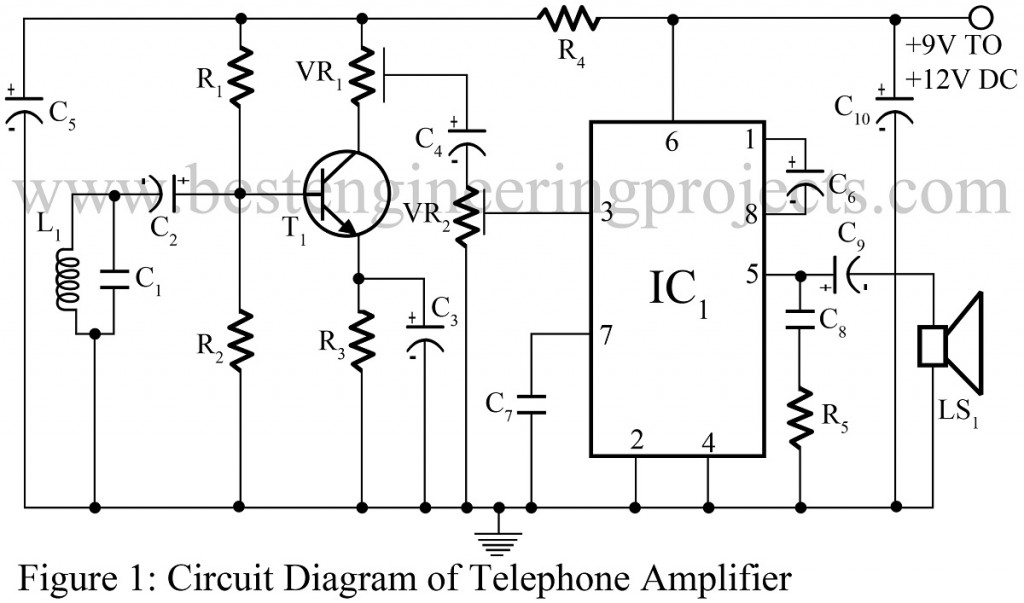Telephone talks are meant to be private or kept in between two persons engaged in the conversation. But, sometimes it is also necessary to have a group talk. The project entitled Telephone amplifier circuit serves us right. It is very simple, yet inexpensive and useful which uses very common power amplifier LM386 and some more components. The circuit can be used to produce loud sound to discuss or start a conversation in a group through telephone.
Working of the Telephone Amplifier Circuit
The signal emitted as output from telephone is more powerful then the signal fed to base of the transistor T1. The output signal from transistor T1 is fed to pin no. 3 of power amplifier LM386 which amplifies up to a level required and then the output obtained from pin no 5 is fed to speaker through capacitor C9. The VCC is given to IC1 through pin 6. The telephone signal can be fed in to circuit through two ways.

- Direct supply telephone signal from telephone line to the point where coil L1 is connected as shown in figure 2.
- Or connect this peak up coil L1 and so adjusted near telephone set where excellent voice be able to single out.
Check out other telephone related projects posted in bestengineeringprojects.com
- Add on Device For Telephone
- Telephone Converter Circuit
- Automatic Time Indicator for Telephone
- Telephone Spy
- Telephone Ringer Circuit using 555 IC
PARTS LIST OF TELEPHONE AMPLIFIER CIRCUIT
Resistors (all ¼-watt, ± 5% Carbon)
R1 = 100 KΩ
R2 = 39 KΩ
R3 = 2.2 KΩ
R4 = 680 Ω
R5 = 100 Ω
VR1 = 4.7 KΩ
VR2 = 10 KΩ
Capacitors
C1 = 27 KPF (273) (Ceramic Disc)
C2, C4 = 2.2 µF, 16V (Electrolytic Capacitor)
C3 = 22 µF, 16V (Electrolytic Capacitor)
C5, C10 = 100 µF, 16V (Electrolytic Capacitor)
C6 = 10 µF, 16V (Electrolytic Capacitor)
C7 = 100 KPF (104) (Ceramic Disc)
C8 = 47 KPF (473) (Ceramic Disc)
C9 = 220 µF, 16 V (Electrolytic Capacitor)
Semiconductors
T1 = BC147B (NPN Silicon Transistor)
IC1 = LM386 (power amplifier IC)
Miscellaneous
L1 = Pick up Coil
Speaker 8Ω
SW1 = On/Off switch
Hi guys and divas..
I m intersted in robotics and I like to do somethin in robotics but I dnt have a proper begining… though I am a beginner plz help me….